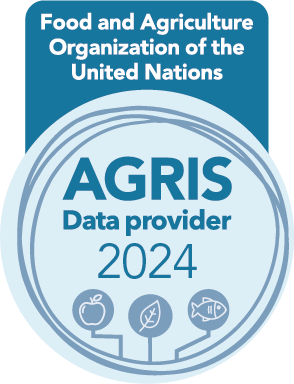Address: Naberezhnaya Severnoy Dviny, 17, Arkhangelsk, 163002, Russian Federation, Northern (Arctic) Federal University named after M.V.Lomonosov, office 1425
Phone: +7 (8182) 21-61-18 Lesnoy Zhurnal |
A.I. Sizov, S.D. Pimenov, A.D. Stroiteleva, K.D. Stroiteleva Complete text of the article:Download article (pdf, 0.6MB )UDС661.728AbstractOne of the main consumers of microcrystalline cellulose (MCC) is the pharmaceutical industry, where MCC is used as a binder and filler in direct compression of tablets. MCC is produced by acidic hydrolysis of cellulose, which usually results in a decrease in whiteness. This is due to the destruction of sugars formed during hydrolysis and the subsequent formation of colored products. The composition and properties of these products depend on the method of hydrolysis, acid concentration, temperature, and process duration. One of the most promising methods for producing MCC is gas-phase hydrolysis of cellulose with hydrogen chloride gas-air mixtures. The method has a high rate of hydrolysis, low reagent and energy consumption. The requirements of the pharmaceutical industry determine the need to produce MCC with high whiteness. The research purpose is to select bleaching modes for MCC using sodium hypochlorite and hydrogen peroxide as bleaching agents. MCC produced by gas-phase hydrolysis of bleached wood pulp was used during the study. The whiteness and intensity of the yellow tint of MCC in the bleaching process were determined by digital colorimetry on a flatbed scanner. The paper shows that sodium hypochlorite and hydrogen peroxide allow achieving the whiteness not less than 90 % and the intensity of the yellow tint not more than 3 standard units. High-quality bleaching can be carried out even for MCC samples with an initial whiteness of about 40 %. The most effective bleaching agent is sodium hypochlorite when the pH of the bleaching solution is 2–3. Hydrogen peroxide also provides high whiteness of MCC at pH of 10–11. However, the consumption of active oxygen (AO) for bleaching is more than three times higher in comparison with the consumption of active chlorine (ACh). It was found that the dyes of MCC produced by gas-phase hydrolysis consist of two chromophore groups that decolorize at different rates. The easily oxidized group of components makes up about 90 % of the total amount of dyes, and the resistant to oxidation components make up about 10 % and determine the intensity of the yellow tint of MCC. The modes of bleaching MCC with sodium hypochlorite and hydrogen peroxide to product samples with whiteness comparable to that of imported samples were determined.AuthorsAlexander I. Sizov1, Candidate of Engineering, Assoc. Prof.; ResearcherID: AAI-2030-2020, ORCID: https://orcid.org/0000-0001-9412-5557Sergey D. Pimenov1, Postgraduate Student; ResearcherID: AAC-9435-2020, ORCID: https://orcid.org/0000-0001-6042-0021 Anastasia D. Stroiteleva2, Analytical Chemist; ResearcherID:AAL-9152-2020, ORCID: https://orcid.org/0000-0002-9031-0007 Katherine D. Stroiteleva2, Analytical Chemist; ResearcherID: AAL-9208-2020, ORCID: https://orcid.org/0000-0001-5888-9349 Affiliation1Saint-Petersburg State Forest Technical University named after S.M. Kirov, Institutskiy per., 5, Liter U, Saint Petersburg, 194021, Russian Federation; e-mail: sizov.alex@gmail.com, chudopim@mail.ru2OOO “Kristatsel”, ul. Shakhmatova, 10, оf. 131, Saint Petersburg, 198504, Russian Federation; e-mail: anastasia_stroiteleva1019@mail.ru, atherine_stroiteleva1007@mail.ru Keywordsbleaching, microcrystalline cellulose, bleaching agents, sodium hypochlorite, hydrogen peroxide, gas-phase hydrolysis of celluloseFor citationSizov A.I., Pimenov S.D., Stroiteleva A.D., Stroiteleva K.D. Bleaching of Microcrystalline Cellulose Produced by Gas-Phase Hydrolysis. Lesnoy Zhurnal [Russian Forestry Journal], 2021, no. 6, pp. 173–183. DOI: 10.37482/0536-1036-2021-6-173-183References1. Байдичева О.В., Хрипушин В.В., Рудакова Л.В., Рудаков О.Б. Цветометрия – новый метод контроля качества пищевой продукции // Пищевая пром-сть. 2008. № 5. С. 20–22. Baydicheva O.V., Khripushin V.V., Rudakova L.V., Rudakov O.B. Colorimetry – A New Method for Quality Control of Food Products. Pishchevaya promyshlennost’ [Food Industry], 2008, no. 5, pp. 20–22. 2. Бернард В. Практика беления и крашения текстильных материалов: Механическая и химическая технология. М.: Легк. индустрия, 1971. 472 с. Bernard V. Practice of Bleaching and Dyeing Textile Materials. Moscow, Legkaya industriya Publ., 1971. 472 p. 3. Емельянова И.З. Химико-технический контроль гидролизных производств. М.: Лесн. пром-сть, 1976. 328 c. Emel’yanova I.Z. Chemical and Engineering Control of Hydrolysis Production. Moscow, Lesnaya promyshlennost’ Publ., 1976. 328 p. 4. Зяблов А.Н., Жиброва Ю.А., Селеменев В.Ф. Цифровая обработка изображений. Достоинства и недостатки // Сорбц. и хроматограф. процессы. 2006. Т. 6, вып. 6. С. 1424–1429. Zyablov A.N., Zhibrova Yu.A., Selemenev V.F. Digital Image Processing. Advantages and Disadvantages. Sorbtsionnye i Khromatograficheskie Protsessy [Sorption and chromatography processes], 2006, vol. 6, iss. 6, pp. 1424–1429. 5. Иванов В.М., Кузнецова О.В. Химическая цветометрия: возможности метода, области применения и перспективы // Успехи химии. 2001. Т. 70, № 5. С. 411–428. Ivanov V.M., Kuznetsova O.V. Chemical Chromaticity: Potential of the Method, Scope and Prospects. Uspekhi khimii [Russian Chemical Reviews], 2001, vol. 70, no. 5, pp. 411–428. DOI: https://doi.org/10.1070/RC2001v070n05ABEH000636 6. Кривошеев М.И., Кустарев А.К. Цветовые измерения. М.: Энергоатомиздат, 1990. 241 с. Krivosheyev M.I., Kustarev A.K. Colorimetric Measurement. Moscow, Energoatomizdat Publ., 1990. 241 p. 7. Патент 2669845 РФ, МПК C08B 15/02. Способ непрерывного гидролиза для получения микрокристаллической целлюлозы: № 2018102867: заявл. 25.01.2018: опубл. 16.10.2018 / А.Ю. Лаптев, Ю.А. Лаптев, А.И. Сизов, С.Д. Пименов. Laptev A.Yu., Laptev Yu.A., Sizov A.I., Pimenov S.D. Method of Continuous Hydrolysis for the Production of Microcrystalline Cellulose. Patent RF no. RU 2669845 C1, 2018. 8. Рудакова Л.В., Васильева А.П., Шведов Г.И., Поплавская Б.В. Цифровые технологии для определения цветности и белизны лекарственных средств // Фармацевтические технологии и упаковка № 1. 2012. № 2(215). С. 38–40. Режим доступа: http://www.medbusiness.ru/Images/FTU_1-2012_38-40.pdf (дата обращения: 08.11.21). Rudakova L.V., Vasil’yeva A.P., Shvedov G.I., Poplavskaya B.V. Digital Technologies for Determining the Color and Whiteness of Medicines. Farmatsevticheskiye tekhnologii i upakovka № 1, 2012, no. 2(215), pp. 38–40. 9. Сизов А., Васильев В. Инновационная технология получения микрокристаллической целлюлозы // ЛесПромИнформ, 2019. № 5(143). Режим доступа: https://lesprominform.ru/jarticles.html?id=5391 (дата обращения: 08.11.21). Sizov A., Vasil’yev V. Innovative Technology for Producing Microcrystalline Cellulose. LesPromInform, 2019, no. 5(143). 10. Тамм Л.А., Чистоклетов Н.В., Платонов А.Ю. Теоретические основы химических превращений моносахаридов в процессах ЦБП. Ленинград: ЛТИЦБП, 1990. 87 с. Tamm L.A., Chistokletov V.N., Platonov A.Yu. Theoretical Basis of Chemical Transformations of Monosaccharides in Processes of Pulp and Paper Industry. Leningrad, LTITsBP Publ., 1990. 87 p. 11. Хакимова Ф.Х., Ковтун Т.Н. Отбелка целлюлозы. Пермь: Перм. гос. техн. ун-т, 2010. 182 с. Режим доступа: https://elib.pstu.ru/Record/RUPNRPUelib3129 (дата обращения: 08.11.21). Khakimova F.Kh., Kovtun T.N. Cellulose Bleaching. Perm, PSTU Publ., 2010. 182 p. 12. Kopesky R., Tsai A.G., Ruszkay T.A. Production of Microcrystalline Cellulose. Patent WO no. WO 2004/011501 A1, 2004. 13. Nguyen X.T. Process for Preparing Microcrystalline Cellulose. Patent US no. US 2004/0074615 A1, 2004. 14. Rabelo M.S., Colodette J.L., Sacon V.M., Silva M.R., Azevedo M.A.B. Molybdenum Catalyzed Acid Peroxide Bleaching of Eucalyptus Kraft Pulp. BioResources, 2008, vol. 3, no. 3, pp. 881–897. 15. Schaible D., Sherwood B. Treatment of Pulp to Produce Microcrystalline Cellulose. Patent US no. US 2005/0145351 A1, 2005. 16. Shishkin Yu.L., Dmitrienko S.G., Medvedeva O.M., Badakova S.A., Pyatkova L.N. Use of a Scanner and Digital Image-Processing Software for the Quantification of Adsorbed Substances. Journal of Analytical Chemistry, 2004, vol. 59, iss. 2, pp. 102–106. DOI: https:// doi.org/10.1023/B:JANC.0000014733.32082.4b 17. Soldat D.J., Barak Ph., Lepore B.J. Microscale Colorimetric Analysis Using a Desktop Scanner and Automated Digital Image Analysis. Journal of Chemical Education, 2009, vol. 86, iss. 5, pp. 617–621. DOI: https://doi.org/10.1021/ed086p617 18. Tian J., Wang J., Zhao S., Jiang C., Zhang X., Wang X. Hydrolysis of Cellulose by the Heteropoly Acid H3PW12O40. Cellulose, 2010, vol. 17, pp. 587–594. DOI: https://doi.org/10.1007/s10570-009-9391-0 19. Toshkov T.S., Gospodinov N.R., Vidimski E.P. Method of Producing Microcrystalline Cellulose. Patent US no. US 3954727 A, 1976. 20. Trusovs S. Microcrystalline Cellulose. Patent US no. US 6392034 B1, 2002. 21. Vanhatalo K.M., Dahl O.P. Effect of Mild Acid Hydrolysis Parameters on Properties of Microcrystalline Cellulose. BioResources, 2014, vol. 9, no. 3, pp. 4729–4740. DOI: https://doi.org/10.15376/biores.9.3.4729-4740 Bleaching of Microcrystalline Cellulose Produced by Gas-Phase Hydrolysis |
Make a Submission
Lesnoy Zhurnal (Russian Forestry Journal) was awarded the "Seal of Recognition for Active Data Provider of the Year 2024" INDEXED IN:
|
||||||||||||||||||||||||||||||||||
|
|

|
|
|
|
|
|
|
|
|
|
|
|
|

|
|
|
|
|
|
|
|
|
|
|
|
|
|
|
|
|

|

|
|
|
|
|
|
|
|
|
|
|
|
|



